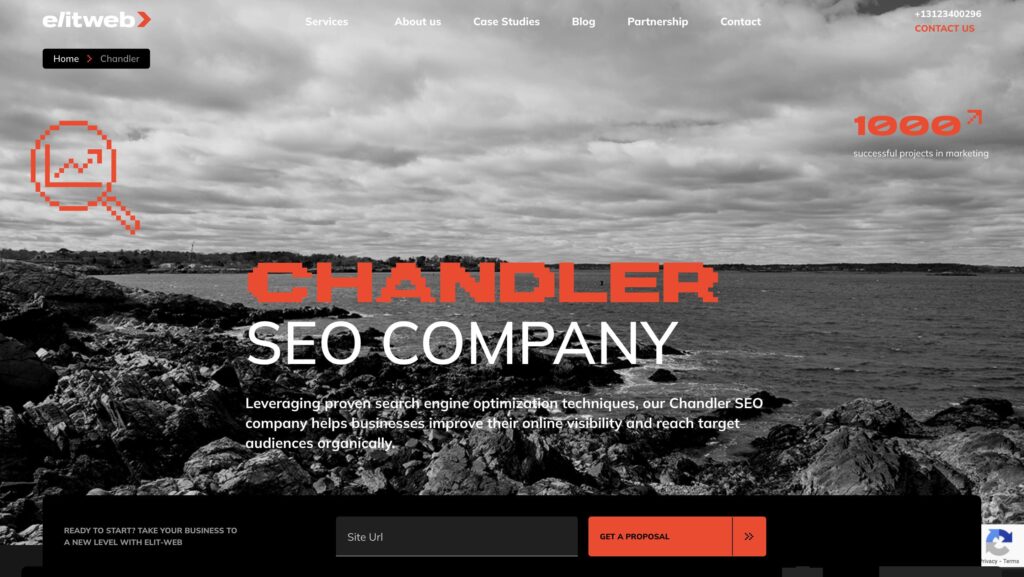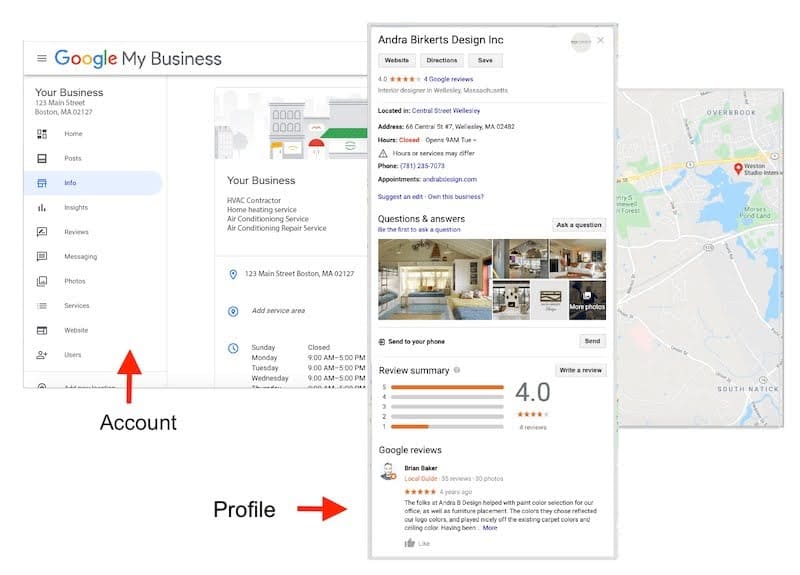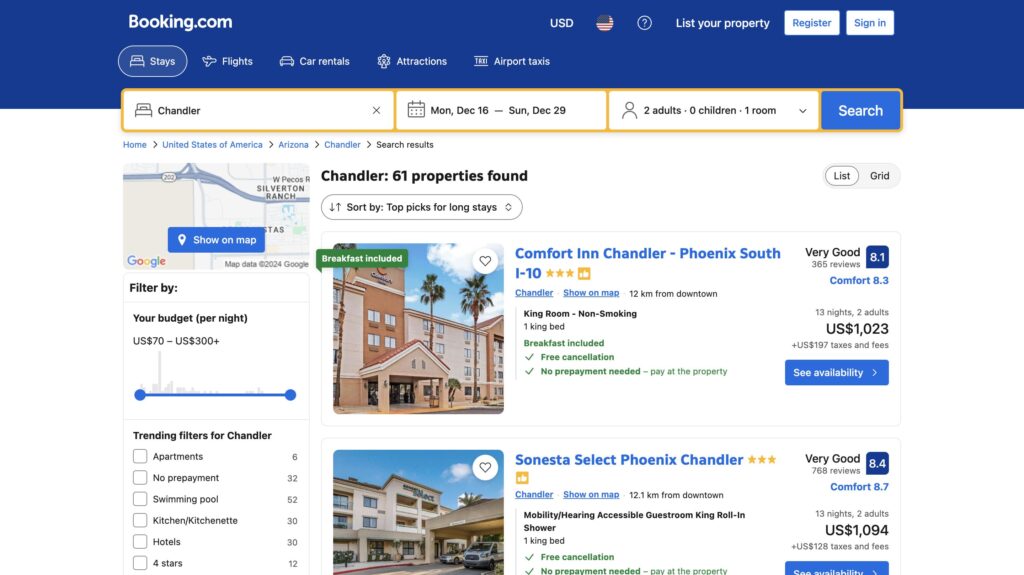SEO for Multiple Locations
Professional SEO for Multiple Locations (MLS) should be used by those companies and brands that offer offline services or visits to offline retail locations, stores, or offices. Promotion through this web practice will help physical retail locations become visible more quickly, attract local customers, and increase traffic. Also, the business can count on the fact that during promotion, those practices, tactics, and methods will be used that allow it to “blend” with the local culture, “fill” the local needs of people, and also grow on the Internet through local user queries.

What Is Multi-Location SEO?
Few understand what is recognized under the terminology MLS, but first of all, it is “multiple locations,” and second of all, the ability to display the business website in search results by geolocation on Google, as well as appear on Google Maps in search results for a specific geolocation. The essence is that it is the same as local SEO, but at the same time, the optimization is designed for “multiple business geolocations.” SEO work consists of the fact that the brand’s web resource must be adapted for each location page of the business.
Why It Matters
This is important for the sole reason that modern companies and brands need to grow in the Internet space, to compete using “white” SEO with their competitors in the same niche, as well as to maximize and globalize their reach from a specific region, city, or country to the international and worldwide level. The use of SEO methods will make it possible to organically increase the online visibility of the brand’s resource simultaneously in several geolocations. In simple terms, the process is very similar to obtaining an SEO franchise.
Local Visibility for Multiple Locations
As soon as a business decides to use professional SEO simultaneously for several offices, retail locations, or branches located in completely different geolocations (in different cities, districts, and even countries), it is important to create an account in My Google Business. Moreover, brand profiles must be created separately for each location. Only through such SEO actions is there a chance to grow in Google rankings, as well as to maximize the overall online visibility of the business.
Brand Awareness with Local SEO
One of the relevant first steps to increasing the level of brand awareness is the implementation of professional local SEO efforts. Through the provision of the service, it is necessary to ensure that the content on the website and each web page of the brand is as relevant and high-quality as possible. The same applies to writing from scratch or turnkey, such important factors as headlines, metadata, tags, lists, and other visible content through which promotion takes place and brand awareness is increased.
Customer Growth via Multi-Location SEO
Globalization of reach does not occur through the opening of new offline retail offices, stores, branches, etc., but through the full use of digital local marketing. To attract a new target audience, a business needs to develop local web pages on its website that would include not only the company name and other important factors, including contact details, but also local data — the name of the city, region, and geolocation in which the brand’s site wants to rank. Only in this way can one get the first place in organic search results.
SEO Strategies for Multiple Locations
Achieving the highest possible ranking and positions for each geolocation is a very complex task. However, only a competent strategic SEO plan that takes into account the MLS solution will contribute to gaining leadership, high customer orientation, brand awareness, and visibility on the Internet. At the same time, the SEO strategy must include only those nuances that will allow achieving maximum results quickly and without problems in the popular Google search engine, regardless of the “specificity” of the geolocation.
Multi-Location Keyword Research
For any business geolocation, it is necessary to sort, analyze, and select unique keywords, phrases, and formulations that are directly related to the location. All word combinations, quotes, and expressions must directly reflect the specific needs, wishes, and search queries of the local population or residents in a particular region. It is precisely such SEO actions that will increase relevance, help the business web resource appear more often in local organic search results, and become more recognizable.
On-Page SEO for Multi-Location Sites
Absolutely all internal optimization actions always concern the content that is directly presented on the business web resource. That is why it is important to develop unique local headlines, meta descriptions, and text content specifically about the geographical location. Such SEO efforts will contribute to the visibility growth of each web page of the brand (in the corresponding location). Additionally, the business needs to use structured information with a clear description of the geolocation.
Creating Location-Specific Landing Pages
Every business geolocation should be “tied” to a specific web page of the brand’s resource. Essentially, it is better to create several landing pages and organize strictly unique, high-quality, and creative content on them, specifying the exact address and other important contact information. Such professional and competent optimization processes will improve not only the ranking in the local popular Google search results but also significantly contribute to increasing conversion rates. This means that the business website has a chance to become more tolerant of online bots and more recognizable among the local audience.

Google Business Profile Optimization
Regular adjustments, updates, and SEO work directly related to the created business account in the My Google Business system are a great opportunity for a business to show itself. The only thing to keep in mind is that the number of offline retail locations the brand has equals the number of local listings that need to be created in the My Google Business profile. Such relevant optimization actions will allow a business to “get into” the local pack. All that is required is to correctly enter all contact information — business hours of the branch, office, or department, the exact address of the offline retail location, as well as the business categories.

Managing Reviews for Each Business Location
It is very important to ensure that, despite the multiple locations of the business, each geolocation (on the web pages) has some reviews, comments, or personal opinions left in text format by the local target audience or potential customers. This kind of content allows any offline retail point not only to improve local positions and rankings but also, of course, to strengthen authority, increase user loyalty, and trust. In addition, the brand needs to consider providing the fastest, most tolerant, and polite responses to all reviews, comments, and opinions. This is precisely what will demonstrate the high quality of the provided service.
Local Link Building for Each Location
For every business, it is very important to obtain backlinks from local, authoritative, frequently-used by users, and popular web sources. This refers to the need to take care of placing link mass on such resources as blogs, forums, directories, and other websites that can strengthen, enhance, and make as powerful as possible the authority of each brand web page that is directly linked to a specific geolocation. It is precisely such optimization actions that will help strengthen the positions of a modern business in local search results.

Local SEO for Multi-Location Businesses
The development of an individual, strategic plan where absolutely all steps and points related to SEO efforts concerning MLS are prescribed is something that cannot be done without. In this clear and structured plan, unique and important factors, features, and steps for each geolocation for further promotion must be specified. It is also important to ensure full consistency of brand information across all locations. Such specialized optimization will increase the company’s recognition at the local level.
Building Local Citations
Any modern business must think in advance about the use and placement of NAP. This refers to specific business data that must be posted and published in local web directories. Such an optimization step will improve the trust of online bots and also increase the local rankings of the brand’s website. However, the business needs to think about citations, which should by their properties be accurate, consistent, and understandable across all web platforms. For example, one of Nike’s marketing campaign quotes became popular all over the world (let us recall that the brand positions itself as an international company) — “Just Do It.”
SEO Mistakes in Multi-Location SEO
Quite a few mistakes can be made during MLS SEO promotion — from incorrect configuration of localization technical parameters, selection of keywords for different language versions of the website, to ignoring important SEO elements, neglecting the use of localization in link building, incorrect translation of phrases and individual words, lack of special web attributes, and so on. It is very important to study local markets before starting the promotion and then competently adjust the overall SEO work.
Ignoring Local SEO Basics
Brands must under no circumstances forget to use the basics of professional local SEO promotion. This refers to correct NAP data, specialized, narrowly focused keywords with different frequencies, and so on. This can lead to the business losing its level of visibility in search. Without creating a strong, reliable, powerful, and organized SEO structure, there is a risk of losing success in online promotion, which must not be allowed.
Poor Google Profile Management
Filling out the profile in Google My Business is an important function that should be a top priority for modern businesses. Absolutely all the information the brand wants to publish in the profile must be up-to-date, truthful, honest, as complete and clear as possible. It is precisely this kind of content that will allow the business site to appear in local search results. Each geolocation requires separate attention and regular data updates.
No Local Content Per Location
When outdated, unclear, and unprofessional content is published on the brand’s website, this can lead to the company’s collapse. People will begin to turn away from the business, stop buying its goods or services, and the local audience will stop visiting offline retail locations. Therefore, irrelevant content should be eliminated in order not to miss the chance to gain leadership among competitors, attract organic traffic, and win the “hearts” and loyalty of consumers.
Skipping Technical SEO
If competent technical optimization is forgotten, the business may lose customers. The fact is that brands often neglect such services as increasing the loading speed of web pages, fixing errors related to indexing the web resource. They also do not make adaptations for mobile gadgets and devices. Because of this, SEO results may be poor. Only by building a strong and competent technical foundation is there a chance to scale in the market and achieve the desired success.
Duplicate Content Across Location Pages
Any duplicate content must be eliminated and removed from the business website. The reason is simple — it negatively affects the algorithms of online bots, and search platforms stop properly ranking the brand’s web resource. Also, the uniqueness of the website drops, as do rankings and positions, and search engines (Google and other online systems) may impose penalties, send the business web resource to a blacklist or ban, and apply other online sanctions.
Overlooking Multi-Location Site Structure
If a chaotic architecture is created on the web resource, it can become a real failure in promoting local businesses in different locations on the Internet. The fact is that a poorly thought-out structure of the brand’s web resource can complicate the navigation cycle, indexing of web pages that are directly related to geolocations. As soon as a clear architecture of URLs and categories, navigation, etc., is set up, it will improve the customer experience as well as SEO efforts.
Measuring SEO for Multiple Locations
The function of tracking SERP for multiple locations is an opportunity to understand what needs to be improved, which campaigns should be looked at more closely, which content needs urgent updating, which keywords to add, and which digital marketing technologies should still be used. Thanks to this service, the business can monitor key performance indicators and adjust all marketing SEO campaigns during promotion that are launched, configured, working, and so on.
Tracking Location-Based Keyword Rankings
If the rankings and positions for local (previously selected) keywords and phrases are regularly monitored, the brand will be able to clearly understand how effectively each geolocation is visible in search. Thanks to this, it is possible to identify both strong as well as weak aspects of the strategic SEO plan for promotion in various geolocations, regions, cities, countries, and so on.
Using UTM Parameters for Local Campaigns
Any business needs to consider using special UTM tags in practice when promoting the site in the online space. These are such interactive elements that are important for local marketing campaigns. They contribute to the most accurate determination of which specific traffic is coming from which particular geolocation or location. This is what helps simplify the analysis of the success of advertising and SEO solutions.
Analyzing Organic Traffic by Location
It is very important to consider splitting organic traffic by geolocations. It is precisely this service that allows brands to more accurately and clearly understand how much individual offline retail locations, branches, offices, and stores bring in more customers and visitors. Thanks to a thorough and as accurate as possible analysis, there is a chance to adapt the strategic promotion plan to the needs of each geolocation, region, city, or country.
Reviewing Conversion Rates for Each Location
Conducting a competent analysis of conversion rates for the brand’s website for each geolocation or location can demonstrate where SEO solutions have not only led to a successful increase in traffic but also to real results in practice. This contributes to the redistribution of financial resources and investments of the business project, improves local performance, and allows for the improvement of many growth indicators for the brand’s resources.
Conclution
Because modern businesses constantly want to scale in the online space (which is considered a completely normal phenomenon), they need to utilize MLS practices. To expand into new, more global and international markets, brands need to engage multilingualism and a comprehensive SEO strategy that would include reaching multiple locations. Moreover, to attract residents, it is necessary to ensure the presence of required web pages that must be adapted to specific regions where the business has offline retail locations. Only in this way can traffic be attracted, activities expanded, leadership established in several locations simultaneously, and the business freely compete with rivals in the same niche at the global level.
FAQ
How Can I Rank for Multiple Locations on Google Maps?
Businesses need to ensure that they create and professionally optimize separate profiles in Google My Business as thoroughly as possible. Only by creating separate accounts for each location, where NAP data and other contact information (photos, reviews, comments, and other content) are specified, is there a chance to appear on Google Maps, becoming a more visible and recognizable business in the market.
What is the Best Way to Optimize My Website for Local SEO?
First of all, it is important to create separate web pages on the company website for each geolocation (location). On these web pages, unique, individual, valuable, and well-crafted content should be placed and published, adding local, narrowly targeted keywords and phrases with varying frequency. Additionally, the business needs to think about the competent structuring of information and adding correct, truthful, honest, and clear NAP data. This is important for subsequent communication with the local and other target audiences.
How Often Should I Update My Google My Business Listing?
It is important to emphasize that at a minimum, once a month, or whenever there are changes in schedule, contact information, or services, the Google My Business profile needs to be updated. The fact is that the relevance of the information provided to search online bots and Internet users can directly affect the trust and loyalty of consumers, as well as adaptability and increased visibility in search.
What are the Key Metrics to Track for Multi-Location SEO?
A modern business or brand needs to monitor its positions for local queries implemented on the website and web pages of the resource. It is also necessary to track organic visits by region, the number of important actions in Google My Business, and monitor the level of conversion rates for each location. Only in this way can one respond promptly to any changes and carry out SEO work on improvements in the online space in general, and so on.





